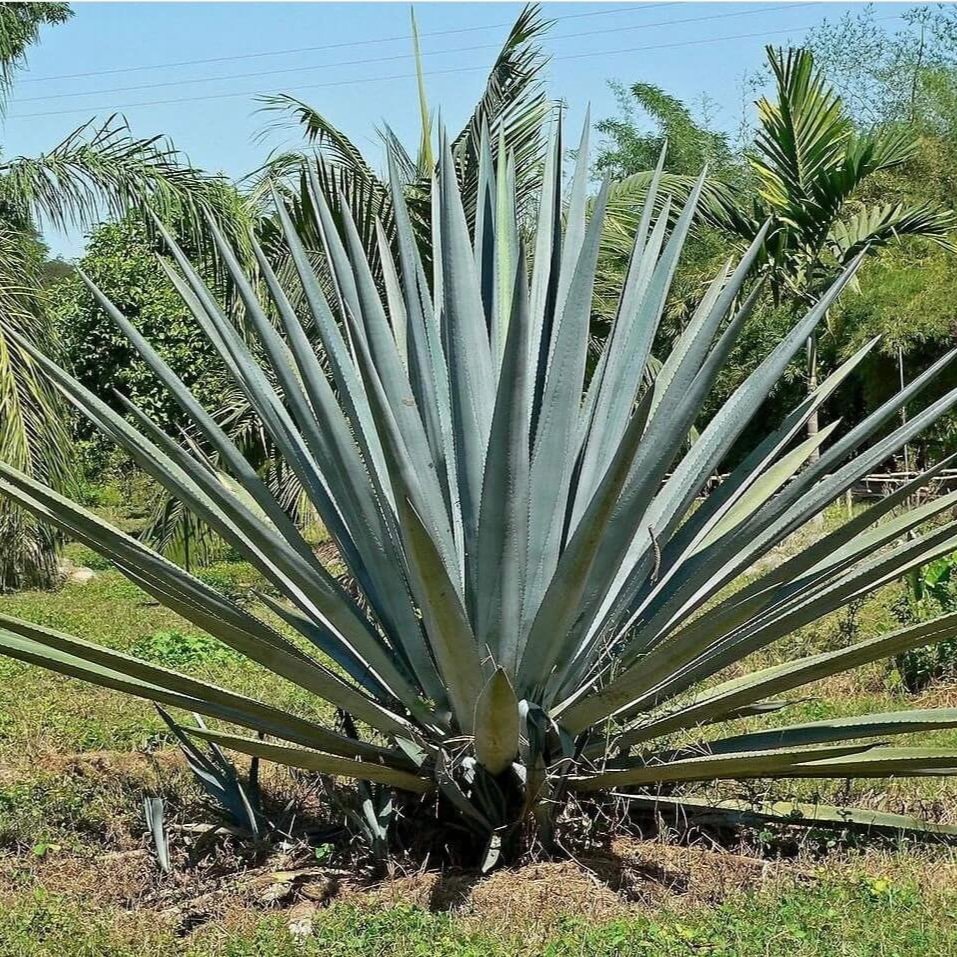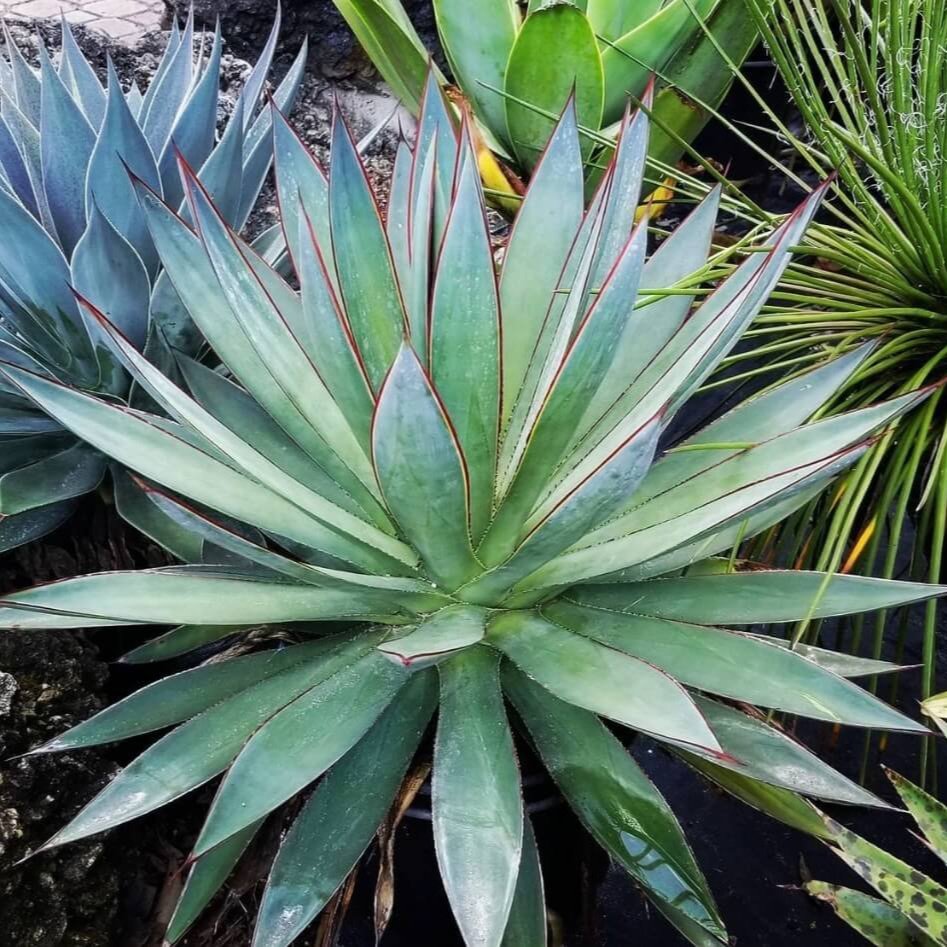Agave Plant Care Guide
Background
Agave plants, also commonly referred to as the century plant or blue agave, are famous for their spiky green leaves that can vary from gray to blue. Not only are they beautiful to look at, but they have some interesting uses. The blue agave plant is used to make tequila and the agave artichoke is what we see in some of our favorite meals. This plant is great for beginners and would be a great addition to any outdoor garden. This post will teach you about the 9 care tips and tricks to take care of your agave plant.
-
Agave
-
Agave
-
Asparagaceae Family
-
Succulent, Perennial
-
Great for Beginners
-
1-20ft tall
-
Full Direct Light
-
Well Draining Sanding Loam. pH 4.3-4.8
-
Green, White, Yellow
-
5-11 (USDA)
-
North America, Central America, and South America.
-
Toxic to Cats, Dogs, and Humans
Different Types of Agave Plants
There are over 200 discovered species of Agave plants in the Asparagaceae Family. Some of the more rare types of agave come from the variegated community. These include the, Agave gypsophila variegata, Agave horrida, and Agave montana. These spiky succulents all have unique qualities that can be a great addition to any green space regardless of their origin.
Agave Americana
Also referred to as the century plant, this is the most common variety of agave. It has beautiful bluish leaves and saw-tooth spines.
Agave Attenuata
Native to Central Mexico, this variation of agave is known for its large green leaves that can grow up to 4-5 feet tall.
Agave Tequilana
This variation of agave is also referred to as the famous blue agave that tequila is made from. It is known or its long green spiky leaves.
Agave Blue Glow
This succulent have a unique outlining to its blueish gray chalky spikes. The outline has hints of red and gold.
Sunlight Requirements
Agave plants need at least 6 hours of direct sunlight per day. Put your agave plant in a very bright area in the home or preferably outside. Normally, agave plants do not tolerate shade very well unless its very hot outside. Harsh sun can do significant damage to the plants leaves. If you decide to pot your agave plant indoors, make sure it is near a south or west facing window, and as always rotate your plant often to make sure there is a even distribution of light throughout all the leaves.
Humidity Requirements
Considering the agave plant is a succulent, it requires minimal humidity levels. If planting indoors, do not place your agave plant near air conditioners or air vents as this can be damaging to the plant. If you live in an area where there is high humidity, it may be difficult to plant your agave plant outdoors.
Temperature Requirements
The Agave plant is found naturally among desert regions, where there are high temperatures and low humidity. With that said, the agave plant thrives best in temperatures between 60-90 degrees. If you are keeping your agave plant outdoors, be sure to gradually start bringing in your agave plant a few weeks before anticipated first frost.
Watering Requirements
The agave species are used to desert climates with low humidity, high temperatures, and most importantly times of drought. Agave plants are used to extended periods of time without water meaning you can water your agave plant every two weeks or after the top two inches of soil dry out. In winter months, water your plant once every 4-6 weeks. Like any plant, never allow the soil to completely dry out.
Soil Requirements
Preferably, use a sandy loam mixed with some rocky soil to provide an acidic environment for the plants to thrive in. If you decide to plant indoors, a succulent potting mix would work great. When it comes to fertilizing, the agave should be fertilized every month in the Spring and Summer months, do not fertilize during the cooler months. Once the agave plant fully matures, fertilization is no longer necessary.
Can I keep my agave plant indoors or outdoors?
-
Yes, it is possible to keep your agave plant indoors granted its needs are met. Get a large pot and fill it with a well draining sandy loam soil and keep it in an area that receives the most light. It may be beneficial to invest in a grow lamp that will help compensate for the lack of direct sunlight.
-
Yes, it is easier to keep an agave plant outdoors. The agave plant requires direct bright sunlight throughout the majority of the day. Place your pot or plant your agave plant in the ground in a area that receives a significant amount of light. If you live in an area that temperatures drop below 50 degrees, consider bringing your plant indoors for the colder months. Make sure that this change is gradual as moving the plant too fast can shock your plant.
Suceptible Diseases & Pests
Agave plants are susceptible to many pests and diseases, some of which include the following:
Root Rot
Fungal Infections
Bacterial Diseases
Snout Weevils
Frequently Asked Questions
-
The Agave plant is mildly poisonous to your furry friends, if ingested it may cause intestinal distress and vomiting. Its always recommended to watch your pets around any plants. If ingestion occurs contact a medical provider or vet immediately.
-
Some varieties of the agave plant can grow up to 12 feet in size. Some can surpass this to 30 feet. Its thick stems are hardy and grow relatively slow. If you see a plant this large just know its old.
-
It takes around 7 years for an agave plant to reach full maturity.
-
This is one of the most common issues that arise when taking care of agave plants. Brown spots on stems is a sign of fungal infection. This fungal infection is called anthracnose, which thrives from humid conditions. It's very difficult to detect early on and can be very detrimental to the health of your plant.






